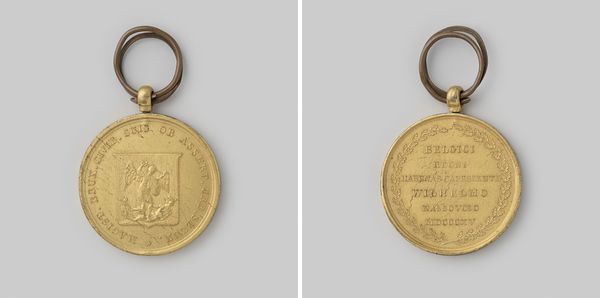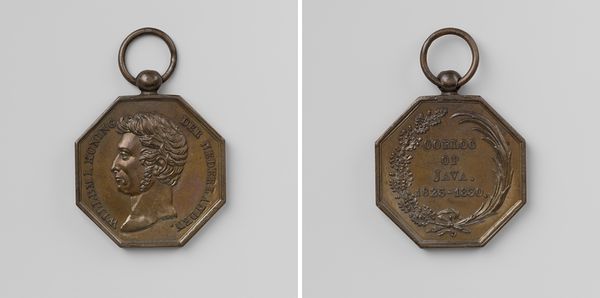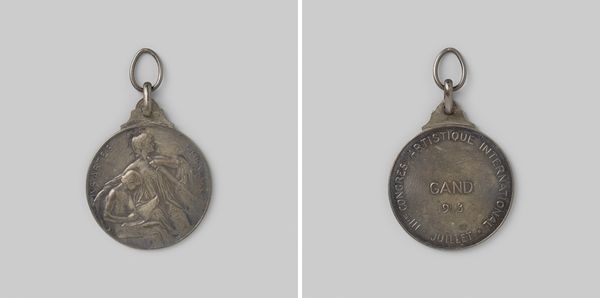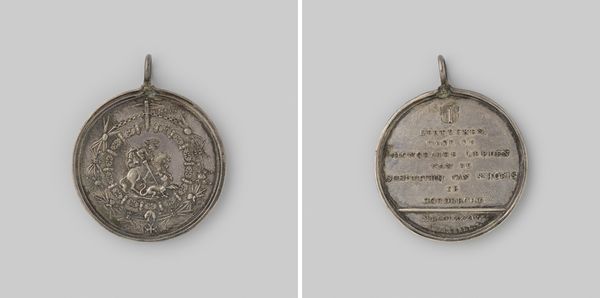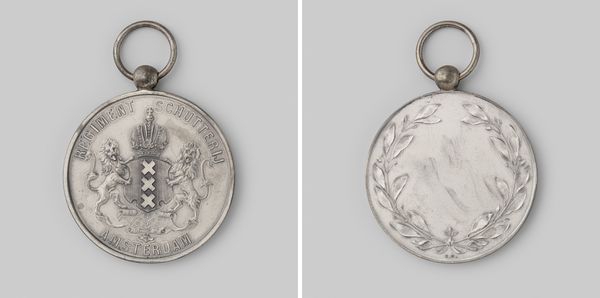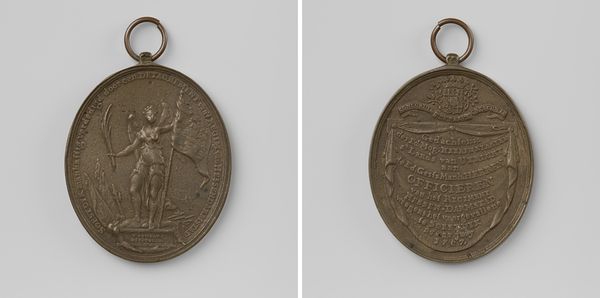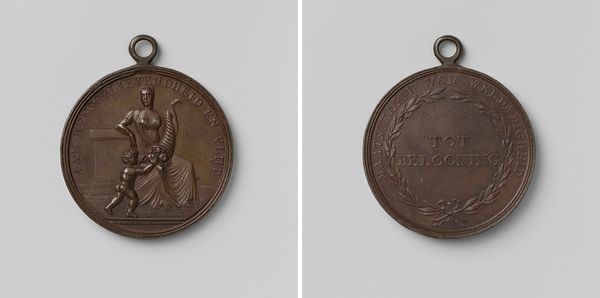
metal, bronze, sculpture
#
medal
#
neoclassicism
#
metal
#
bronze
#
sculpture
#
history-painting
Dimensions: height 4.3 cm, height 3.5 cm, height 3 cm, weight 16.79 gr
Copyright: Rijks Museum: Open Domain
Editor: Here we have "Citadel van Antwerpen, draagteken uitgereikt aan de verdedigers," a bronze medal from 1832 by Johannes Petrus Schouberg. It’s small but carries a weight, I think – a solemn acknowledgement. What layers of meaning do you see embedded in this piece? Curator: This medal serves as a potent material symbol of nation-building, class and identity. Its creation speaks to the tumultuous period of Belgian independence from the Netherlands, marked by violent clashes and sieges, notably the siege of Antwerp's citadel. We need to consider who were the defenders being honored here, and what power dynamics were at play. Was this truly about honoring valor, or was it a strategic narrative meant to consolidate a newly formed nation, one that possibly glossed over class divisions inherent in armed conflicts? Editor: That’s interesting! The back of the medal features a prominent "W" topped with a crown – how does that fit into this interpretation? Curator: Precisely! That "W" most likely refers to King Willem I of the Netherlands, whose forces controlled the citadel. Understanding the historical context of loss helps us ask whose narratives are amplified and whose are silenced in the forging of national identities. This medal raises key questions about remembrance, political strategy, and the way collective memory is manufactured and distributed through even small objects. Editor: It’s really fascinating to think of something this small carrying so much historical weight and serving a particular agenda. It gives a new dimension to how I perceive historical artifacts. Curator: Exactly! Seeing it as more than just a commemorative object—but rather as a political tool—lets us dissect the layers of power interwoven in even the simplest forms of art.
Comments
No comments
Be the first to comment and join the conversation on the ultimate creative platform.

